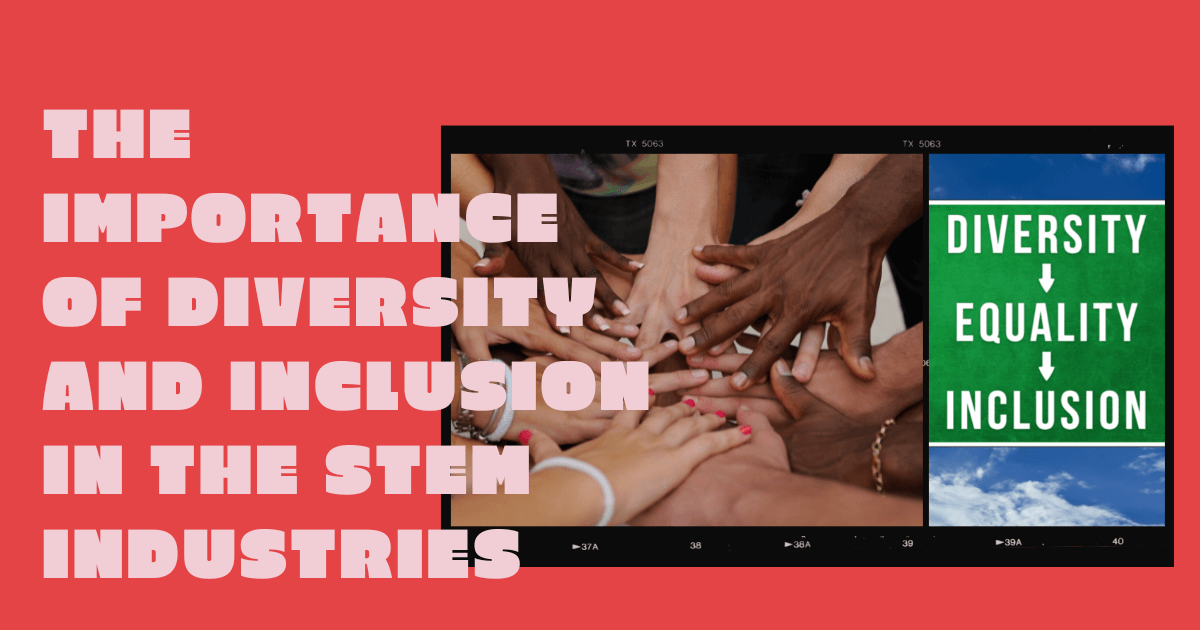Diversity and inclusion in STEM can mean many different things and we can all amplify both of them every day. Whether it's in the business world, the tech world, the education world, or the STEAM world, everyone should celebrate diversity, and inclusion should be the norm. If we've learned anything in the last handful of years, however, it’s that this isn't always guaranteed. In the STEM and technology worlds, in particular, there isn’t a whole lot of racial, gender, and ethnic diversity. While that may be true at the moment, there is always the potential for changes—to recognize shortcomings and collectively make things more inclusive. After all, we’re a part of the tech world, the business world, and also the education world. And, we are led by a Black man who’s brought our team together to chase a common goal.
When businesses are born, CEOs or whoever led its incorporation draw up business plans. These include ideas for making money, for marketing, for obtaining customers, and this list goes on. Until recently, ideas for promoting diversity and inclusion in STEAM companies (or any companies) weren't in many business plans. With the events of 2020, however, we know that they’re now a lot more common. And, that’s not to say that a decision maker has to hire somebody of a different race if there is somebody else who is better suited for the role. But, it's everybody’s responsibility to learn about other races, their histories, their trials, and what makes them unique. Too often, that’s where we collectively fall short—by being undereducated.
Putting a focus on diversity.
In order to promote greater STEM diversity and inclusion within a business culture—whether that’s in the hiring process or in day-to-day company life—company leaders need to take a step back to examine their current structure. Oftentimes, these may need adjustments to better align with company goals at both the professional level and the personal level. Like with any new policy, however, efforts to extend diversity and inclusion aren’t going to just stick on their own. They have to begin and grow from the leadership level and spread throughout all levels and departments to help generate employee buy-in.

There’s no right or wrong way to promote and commit to a greater sense of inclusion within a company but some approaches are known to achieve success. Oftentimes, this starts with some more direct employee communication. Chances are that at least one person within a company has noticed something they won’t think is right. They may also just simply be uncomfortable with diversity and inclusion levels or, more likely, a lack thereof. Being open with all employees and requesting specific suggestions is a great first step. It's also one of the most efficient ways to make sure it lasts.
Understanding diversity in STEM industries.
It’s true in any industry but, since we're part of both the education and the technology industries, our group of employees come from different backgrounds—and many different countries. And, with all this increasing diversity across all of today's STEM industries comes a bigger need for understanding what makes each person unique. Perhaps more importantly, everyone benefits from understanding how various events can impact people of different races, genders, and economic levels. Recognizing this diversity can help shed light on various employee needs and finding ways to address them.
Though we're a company with a lot of diversity, it's easy to overlook this if we don’t prioritize embracing it. This starts with collectively determining why diversity is important to us. Since we're a smaller team with members from various continents, naturally, we sometimes have differing viewpoints, values, and priorities. Rather than doing the easy thing and making decisions without input from everyone, we have learned why certain members of our team think in a certain way and how this insight is valuable. It’s also important that all of our team members feel comfortable with saying why diversity is important to them. This is generally what helps us achieve both individual and team-oriented goals.

Employees should also feel comfortable when challenging any lack of diversity in STEM or even within their day-to-day working environment. This starts with these company leaders being approachable and listening to specific concerns employees might share. At the same time, leaders can also look for barriers that might impede hiring people of different backgrounds and then actively address them. These might be simple, like skipping a resumé simply due to the name, or something more complex. We also value how diversity tends to bring along talent and, although it might be unique, it’s still talent.
What can we collectively do?
Collectively, company leaders and employees (of all backgrounds) can work on creating equitable, realistic, and impactful solutions. No leader wants employees feeling uncomfortable but achieving true inclusion and diversity starts with listening. Developing clearly defined approaches can have long-term positive effects as well, like retaining STEM diversity for years to come. This and giving all employees access to the tools and resources to make sure they’re in the best place mentally and emotionally can be instrumental to ensuring an equitable environment.
While most of this refers to the professional world, it can also transfer into the education world. School and district administrators can create these same kinds of initiatives to ensure that teachers and other faculty members feel welcomed and comfortable. Also, most companies and institutions are much bigger than our start-up and more likely to be more diverse. In the technology industry, specifically, we're certainly up there in terms of diversity, which we’re proud about. So, just remember that it’s important to increase diversity in STEM professions and to embrace how employees feel to better understand how you might do so. Follow us on Twitter and Instagram for more.



